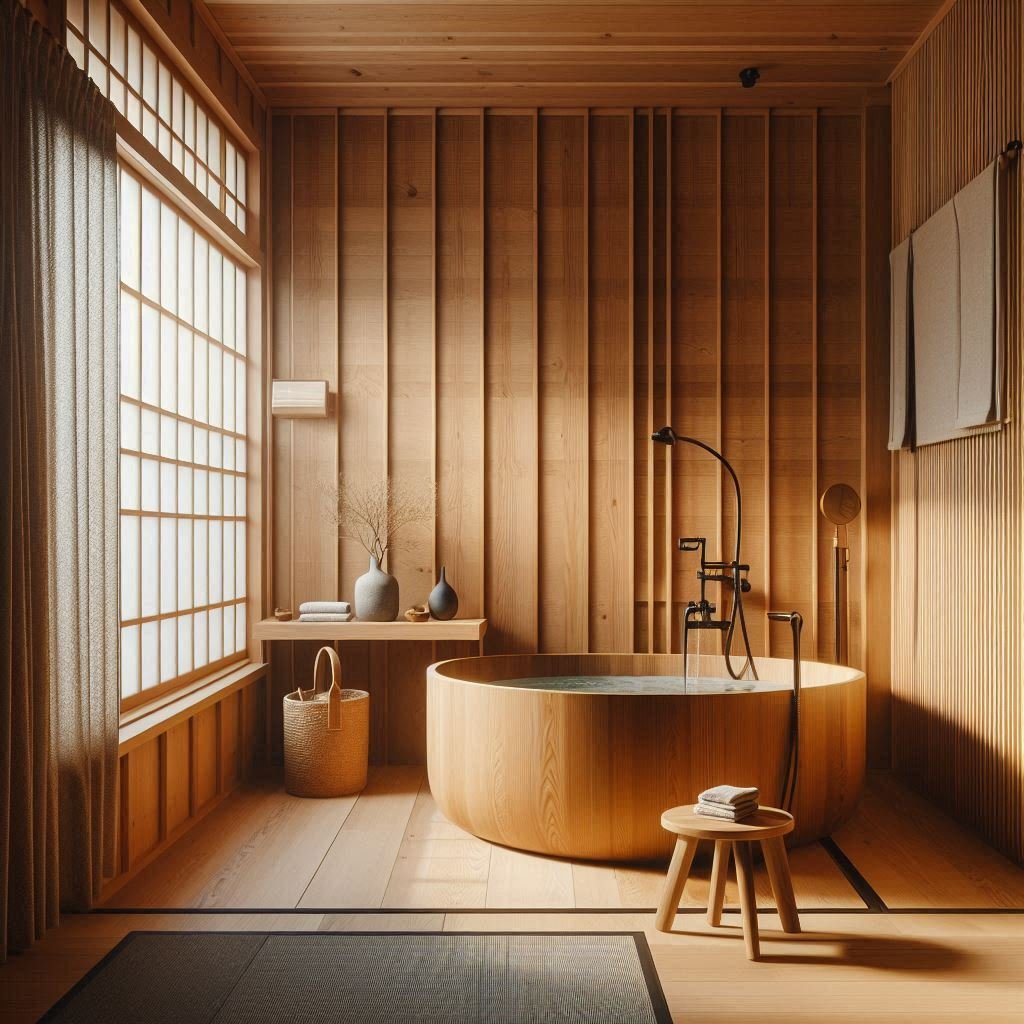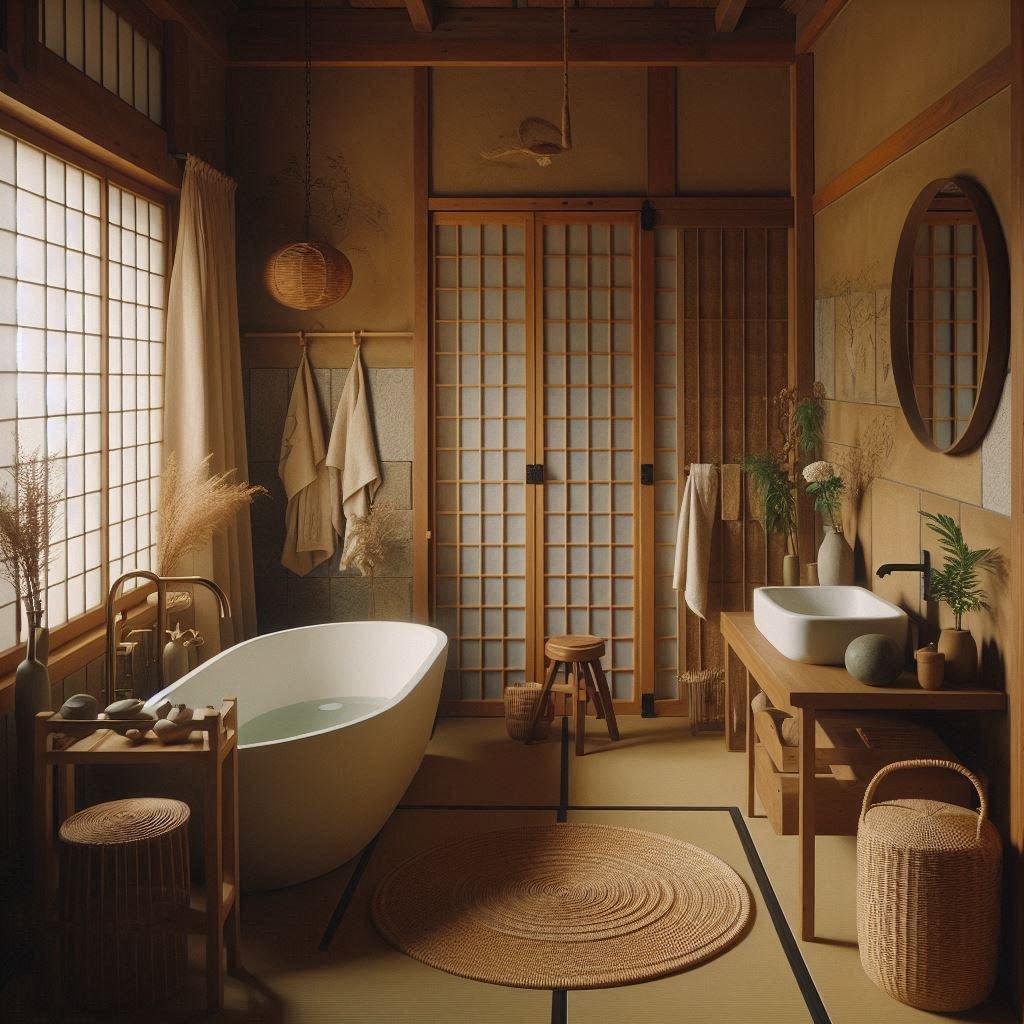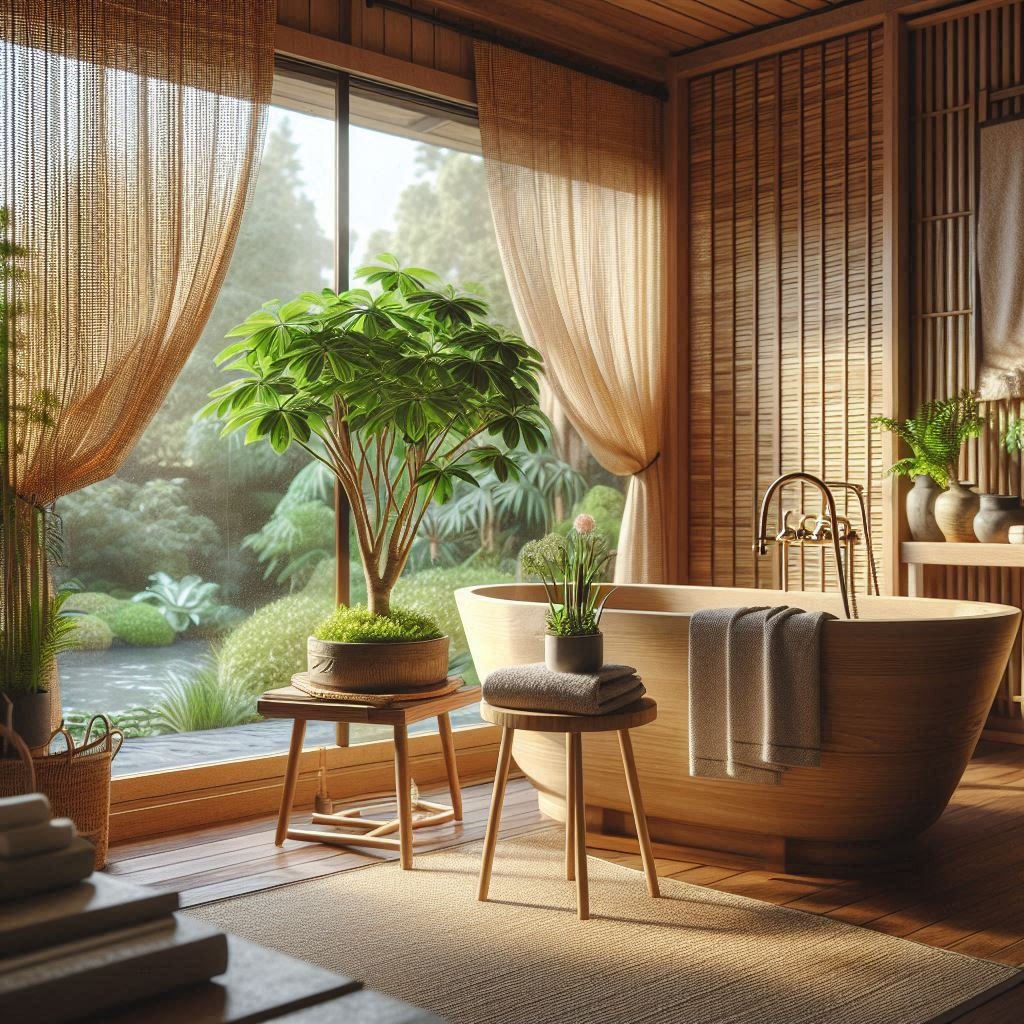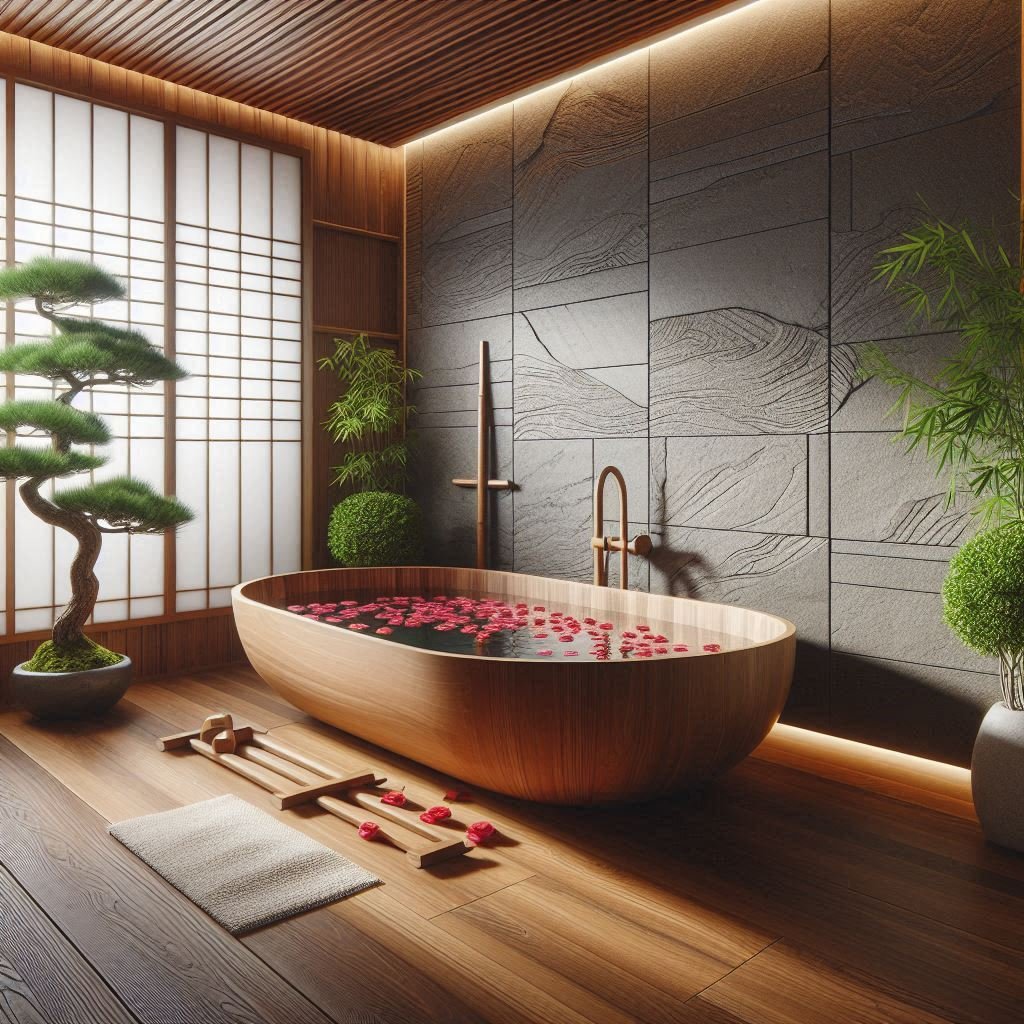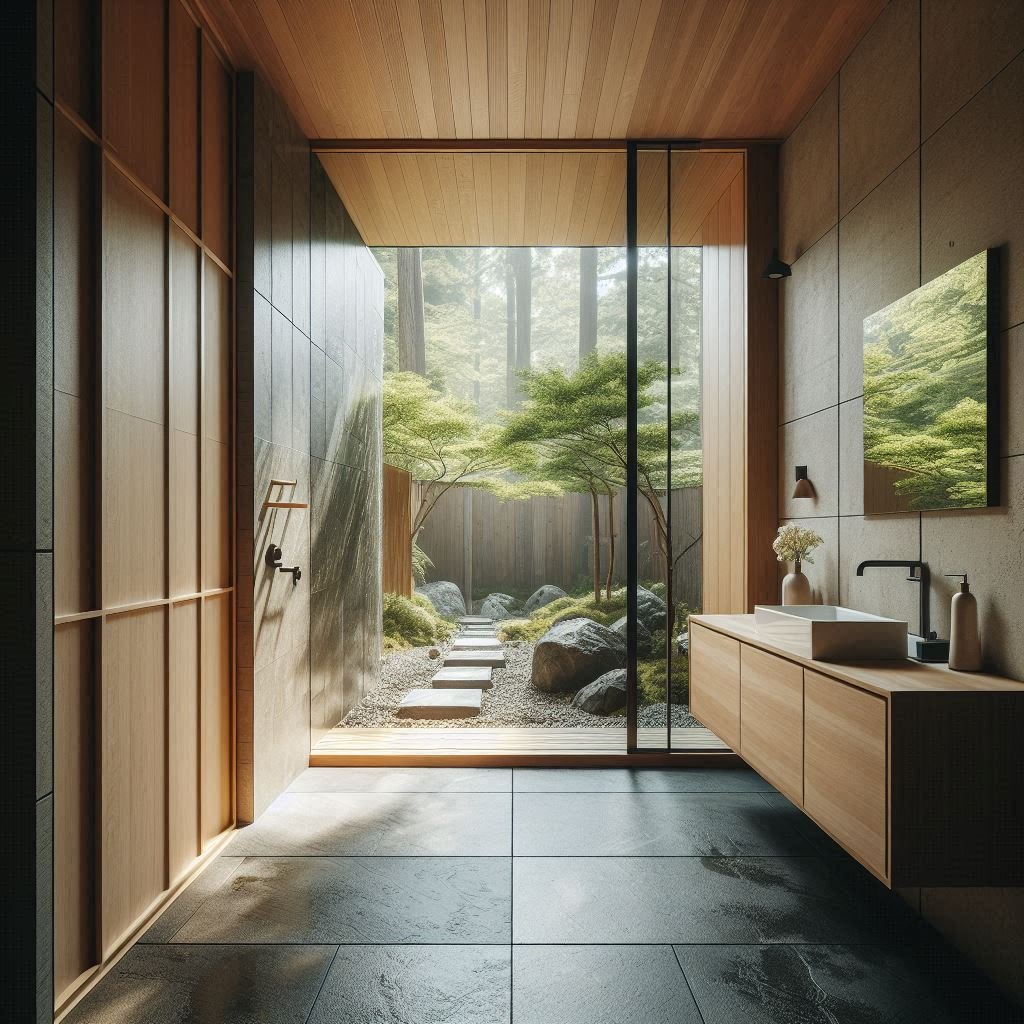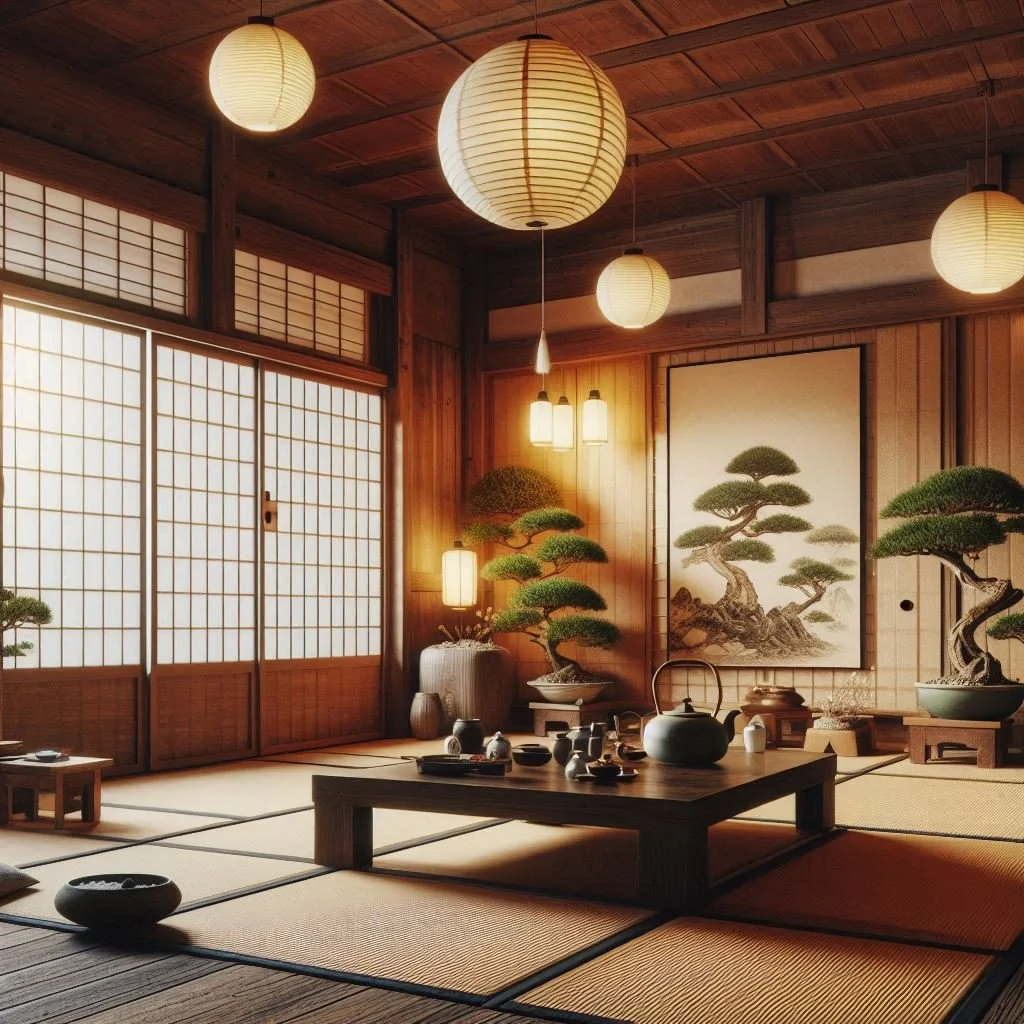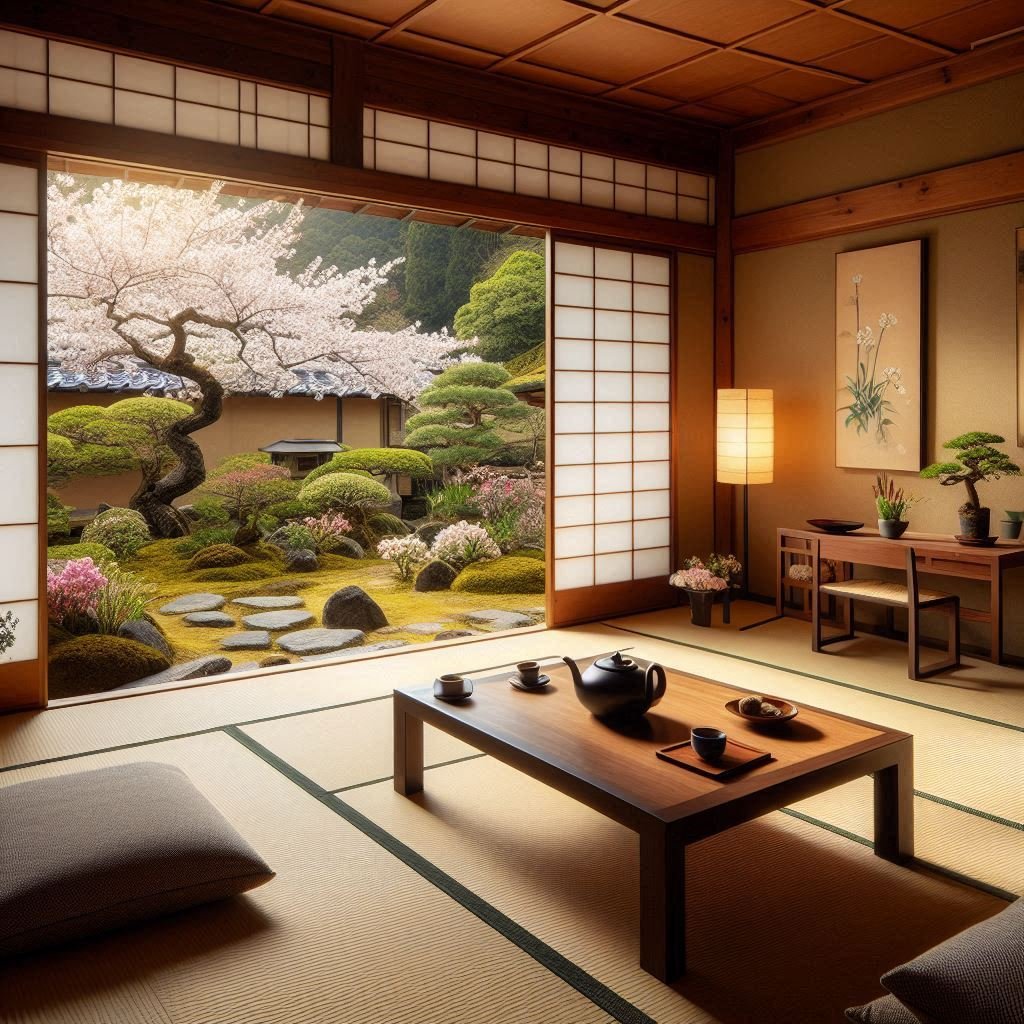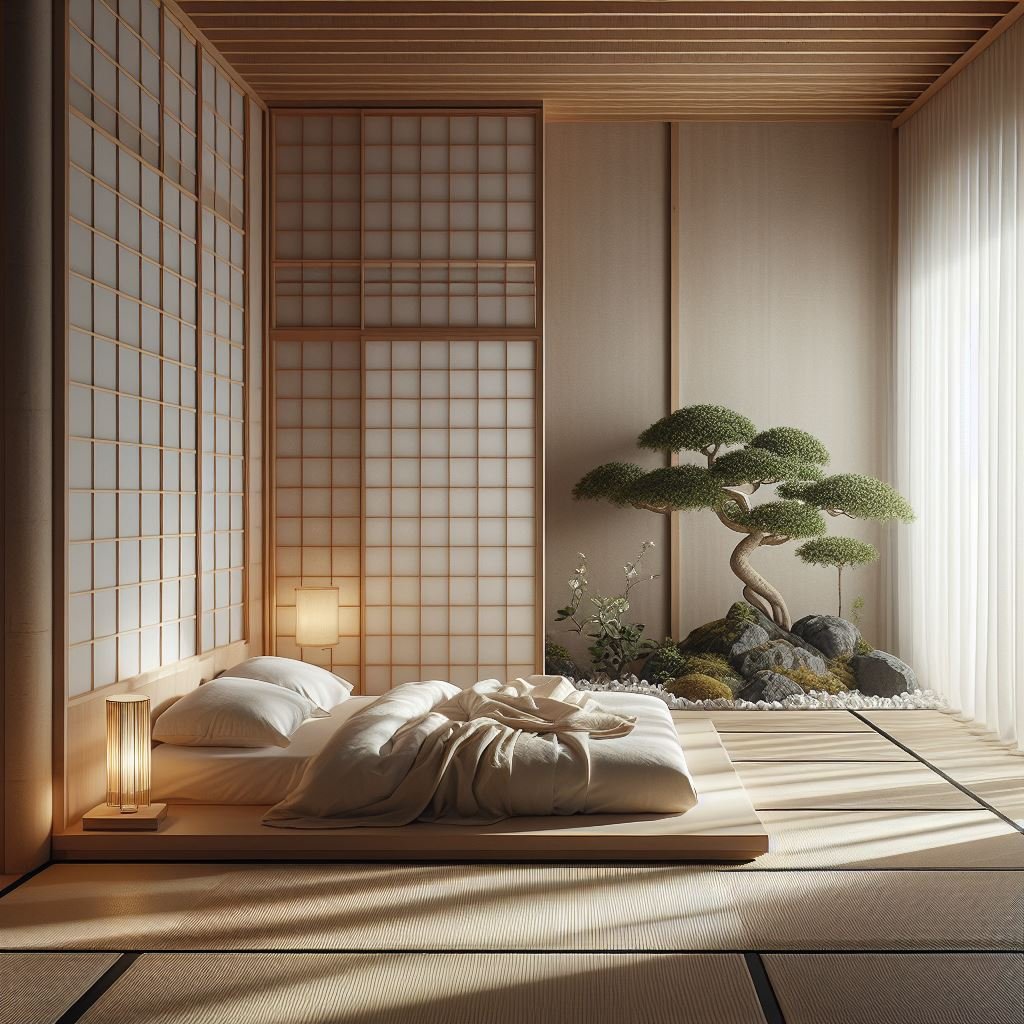15 Serene Japanese Bathroom Ideas for Tranquility
Discover 15 serene Japanese bathroom ideas to transform your space into a haven of tranquility. Embrace simplicity, natural elements, and Zen design for ultimate relaxation.
Japanese bathrooms are renowned for their serene, calming atmospheres and meticulous attention to detail. Embracing simplicity, natural elements, and a sense of Zen, these spaces are designed to be peaceful retreats from the chaos of daily life. If you're looking to create a tranquil oasis in your home, you've come to the right place. Let's explore 15 serene Japanese bathroom ideas that will transform your bathroom into a haven of tranquility.
1. Natural Materials
Incorporating natural materials is a cornerstone of Japanese bathroom design, emphasizing the use of stone, wood, and bamboo. These elements create a harmonious and grounding atmosphere, bringing the calming presence of nature indoors. Stone tiles or sinks add a sense of solidity and permanence, while wooden accents, such as stools or shelving, provide warmth and a tactile connection to the natural world. Bamboo can be used for mats, blinds, or decorative elements, adding a touch of elegance and simplicity. Together, these materials foster a serene and tranquil environment, perfect for relaxation and mindfulness, embodying the essence of Japanese design principles in your bathroom.
2. Minimalist Design
Japanese bathrooms are renowned for their minimalist design, prioritizing simplicity and functionality. Keep the decor simple and uncluttered, focusing on clean lines and efficient use of space. This minimalist approach enhances tranquility, creating a serene and calming environment ideal for relaxation. By reducing clutter and using streamlined fixtures, the space feels more open and inviting. Additionally, this design philosophy makes the bathroom easier to maintain, ensuring it stays tidy and organized with minimal effort. Opt for neutral tones and natural materials to further embody the essence of minimalist Japanese design, creating a bathroom that is both beautiful and practical.
3. Soaking Tubs
A traditional Japanese soaking tub, or "ofuro," is deeper than Western tubs and designed for ultimate relaxation. Soaking in hot water up to your neck in an ofuro offers a meditative experience that soothes both body and mind, promoting a sense of tranquility and well-being. These tubs are typically made from hinoki wood or other natural materials, adding an authentic touch and a pleasant aroma to your bathroom. Installing an ofuro can transform your bathroom into a serene retreat, providing a space for daily unwinding and self-care. Its compact size makes it suitable for various bathroom layouts, ensuring you can enjoy the benefits of this traditional practice even in modern homes.
4. Earthy Color Palette
An earthy color palette featuring shades of brown, beige, green, and gray enhances the natural feel of a Japanese bathroom. These calming hues create a peaceful environment that complements the natural materials used in the space, such as wood, stone, and bamboo. Soft greens evoke the tranquility of a forest, while browns and beiges bring warmth and grounding elements. Grays add a touch of modern elegance without detracting from the overall serene aesthetic. Together, these colors create a harmonious and soothing atmosphere, making the bathroom a perfect retreat for relaxation and mindfulness. Integrating this palette ensures your Japanese-inspired bathroom feels both authentic and inviting.
5. Wooden Elements
Wooden elements are essential in Japanese bathrooms, adding warmth and a natural touch to the space. Incorporate wooden bathtubs, bamboo mats, and teak shelves to bring the beauty of nature indoors. These elements not only enhance the aesthetic appeal but also create a calming and serene atmosphere. To ensure durability, it's crucial that the wood is treated to withstand moisture and humidity, preserving its beauty and functionality over time. By integrating various wooden features, you can achieve an authentic Japanese design that promotes relaxation and harmony in your bathroom.
6. Indoor Plants
Indoor plants bring life and freshness to a Japanese bathroom, enhancing its serene and natural atmosphere. Opt for low-maintenance varieties such as ferns, peace lilies, or bonsai trees. These plants not only purify the air but also add a touch of greenery that complements the earthy tones and natural materials typically used in Japanese design. Strategically place plants around the bathroom, such as on shelves, near the bathtub, or in corners, to create a calming, nature-inspired retreat. Their presence fosters a sense of tranquility and connection to nature, enriching the overall ambiance of the space.
7. Soft Lighting
Soft, diffused lighting is essential for creating a tranquil Japanese bathroom. Incorporate frosted glass fixtures, paper lanterns, or LED lights with dimmers to achieve a warm, inviting glow. This type of lighting helps to maintain a peaceful ambiance, avoiding the harshness of bright lights that can be disruptive. Position lighting strategically around the space to enhance the serene atmosphere, focusing on areas like the soaking tub and vanity. The gentle illumination not only complements the natural materials and earthy tones but also encourages relaxation and mindfulness, transforming your bathroom into a calming retreat.
8. Sliding Doors
Sliding doors, or "shoji," are a traditional feature in Japanese design, offering both functionality and elegance. These doors save space and contribute to the minimalist aesthetic. Shoji doors with translucent paper panels allow natural light to filter through, creating a soft, diffused glow that enhances the serene atmosphere of the room. They seamlessly blend with other natural elements like wood and stone, adding to the overall harmony and tranquility of the space. Incorporating shoji doors in your bathroom can create a seamless transition between different areas, promoting a sense of openness and peace while maintaining privacy when needed.
9. Stone Accents
Incorporate stone accents to bring an earthy feel to your bathroom. Use river stones, pebbles, or slate tiles for flooring, countertops, or decorative elements. Stone's natural texture and cool touch add to the bathroom's Zen vibe, creating a serene and grounding environment. Consider a pebble-tiled shower floor or a stone sink to enhance the natural aesthetic. These elements not only provide visual interest but also offer a tactile experience that connects you with nature. Pair stone accents with other natural materials like wood and bamboo to create a harmonious and calming space, perfect for relaxation and rejuvenation.
10. Open Showers
Open showers with a seamless transition to the rest of the bathroom create a spacious, airy feel. Opt for glass partitions or even no partitions to maintain a minimalist aesthetic. This design choice not only maximizes space but also enhances the flow of the room. Proper drainage and ventilation are crucial to prevent water damage and maintain a clean, dry environment. Consider a sloped floor to direct water flow efficiently and install an efficient exhaust fan to keep humidity levels in check. This open shower concept can transform your bathroom into a modern, elegant space that feels both luxurious and practical.
11. Water Features
Adding a small water feature, like a tabletop fountain or a mini indoor waterfall, can enhance the sense of tranquility in your bathroom. The sound of flowing water is inherently calming and can help you relax and unwind. Choose a design that complements your bathroom decor, whether it's a sleek, modern piece or a more natural, stone-like feature. Placing the water feature on a countertop or near the bathtub can create a spa-like atmosphere, making your bathroom a serene retreat. This simple addition not only brings aesthetic appeal but also promotes a soothing environment, perfect for de-stressing after a long day.
12. Zen Gardens
Create a mini Zen garden in your bathroom using sand, rocks, and a small rake to cultivate a meditative space. This simple yet elegant addition can serve as a focal point, providing a sense of balance and peace. Arrange the sand and rocks in a shallow tray, and use the rake to create calming patterns. Place the Zen garden on a countertop or in a dedicated corner for the best visual and tranquil effect. This serene element not only enhances the decor but also offers a moment of mindfulness, allowing you to unwind and find calm in your daily routine.
13. Bamboo Details
Bamboo is a versatile material that perfectly complements a Japanese-inspired bathroom. Incorporate bamboo accessories like toothbrush holders, soap dispensers, and storage containers to bring natural beauty and durability into your space. A bamboo ladder can serve as a stylish and functional towel rack, adding to the overall aesthetic. The natural tones and textures of bamboo create a warm, calming environment, ideal for a relaxing bathroom. This sustainable material not only enhances the decor but also aligns with the principles of simplicity and harmony found in Japanese design, making your bathroom both elegant and eco-friendly.
14. Personal Touches
Incorporate personal touches to make your Japanese bathroom feel unique and special. Add items that have personal significance, such as a favorite piece of art, a cherished plant, or handmade ceramics. These elements add warmth and individuality, transforming the bathroom into a personal sanctuary. A beloved painting or a carefully selected bonsai can bring a touch of your personality into the space. Handmade ceramics, like soap dishes or small vases, add a rustic, authentic feel. These personal items enhance the serene and minimalist aesthetic of a Japanese bathroom, making it a reflection of your taste and memories.
15. Balance of Styles
Achieving a balance between minimalist and traditional Japanese styles is key to designing a harmonious bathroom. Use minimalist principles to keep the space uncluttered and functional, emphasizing clean lines and simple layouts. Incorporate traditional Japanese elements like natural wood, bamboo accents, and shoji screens to add personality and warmth. Tatami mats, stone basins, and subtle greenery can enhance the serene ambiance. This combination of minimalist design and traditional touches creates a stylish bathroom that feels both modern and tranquil, offering a peaceful retreat that reflects the elegance and simplicity of Japanese aesthetics.
Conclusion
Creating a serene Japanese bathroom is all about embracing simplicity, natural materials, and a sense of Zen. By incorporating these 15 ideas, you can transform your bathroom into a tranquil retreat that soothes the senses and provides a peaceful escape from the hustle and bustle of everyday life. Embrace the principles of Japanese design to create a space that is both elegant and calming.
Frequently Asked Questions
1. Can I incorporate other styles into a Japanese bathroom?
Absolutely! You can blend Japanese design with other styles like Scandinavian or modern minimalist to create a unique and personalized space.
2. How do I maintain the natural materials used in a Japanese bathroom?
Regular cleaning and proper ventilation are key. Use natural cleaning products to avoid damaging materials like wood and stone, and ensure good airflow to prevent moisture buildup.
3. What type of lighting works best in a Japanese bathroom?
Soft, diffused lighting is ideal. Use frosted glass fixtures, paper lanterns, or dimmable LED lights to create a warm and inviting glow.
4. Are Japanese soaking tubs comfortable for everyday use?
Yes, they are designed for relaxation and can be used daily. Their deep design allows for full-body immersion, providing a soothing and meditative experience.
5. How can I add a personal touch to my Japanese bathroom?
Incorporate items that have personal significance, such as favorite art pieces, cherished plants, or handmade ceramics. These elements add warmth and individuality to the space.
